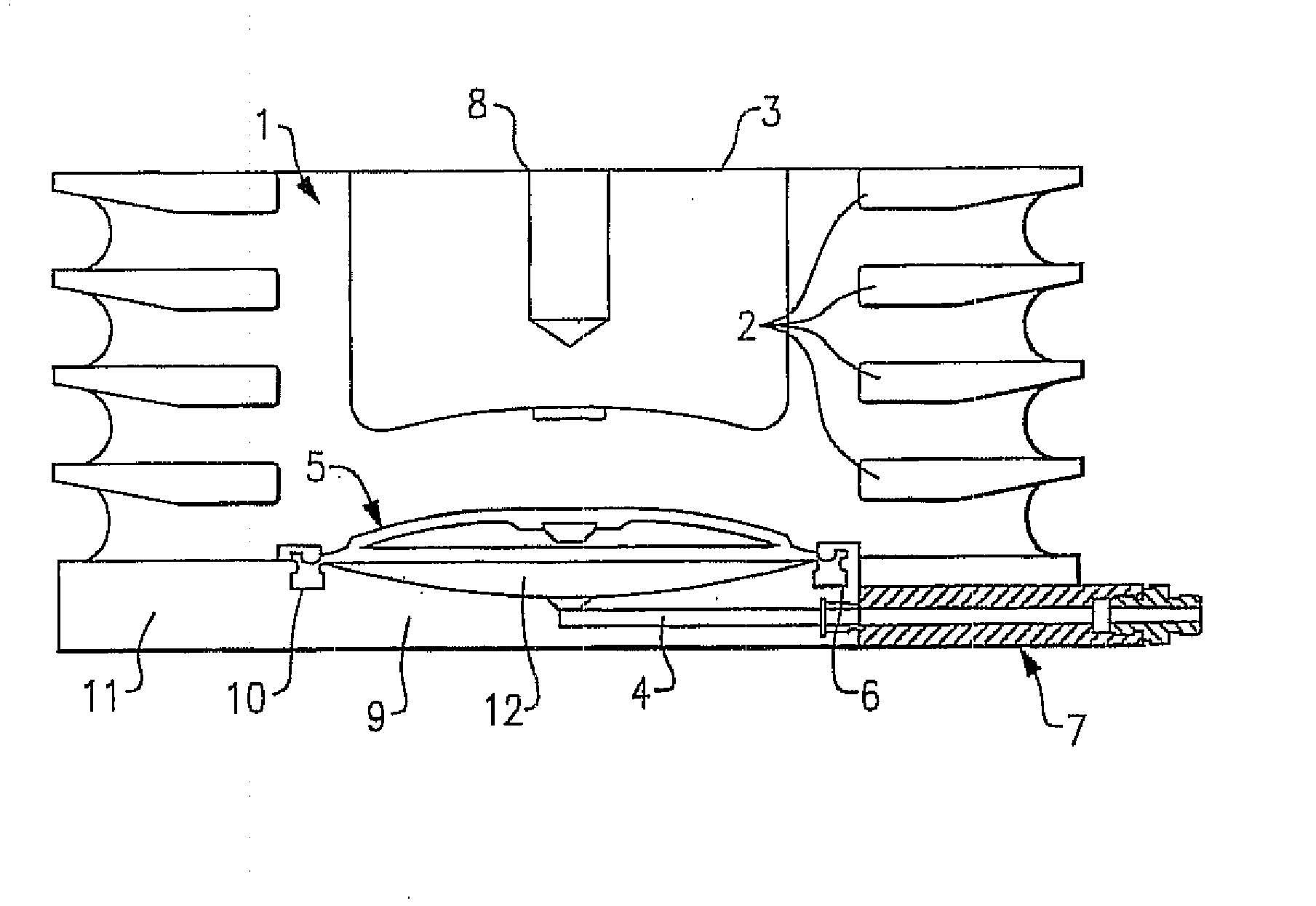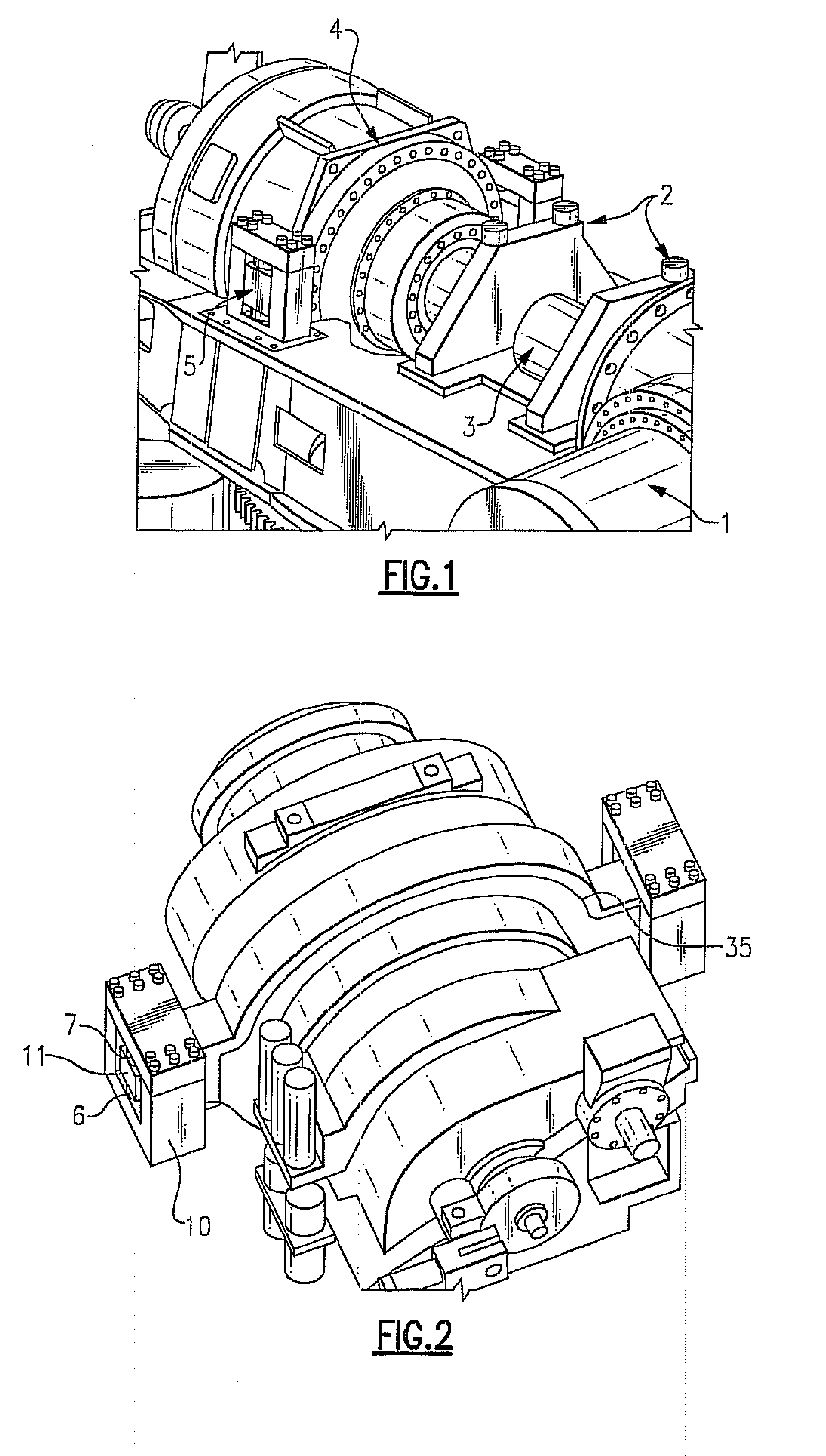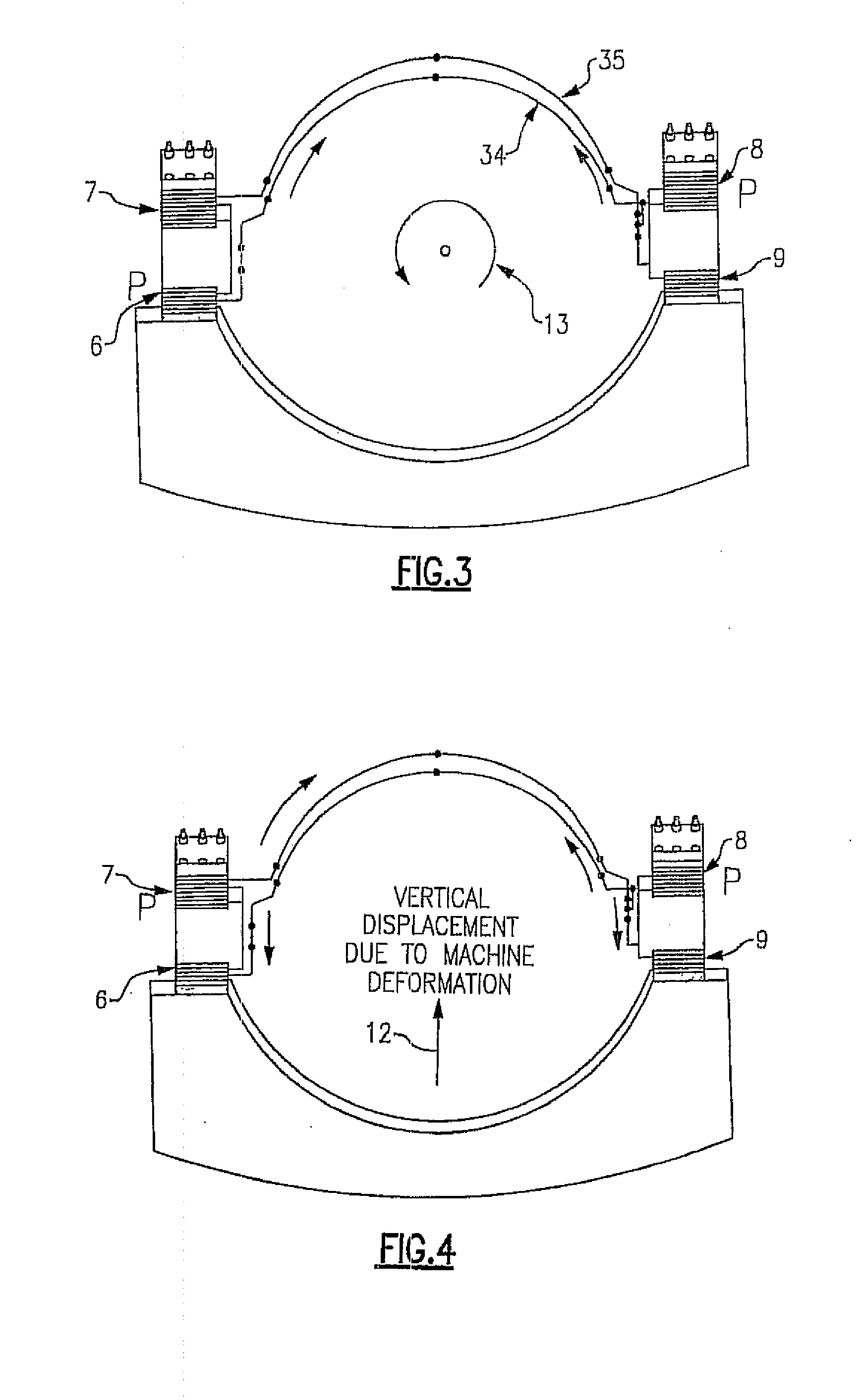Hydraulically prestressed elastomer spring element and the use thereof in wind turbine bearings
a technology of elastomer spring element and wind turbine bearing, which is applied in the field of spring element and bearing, can solve the problems of indeterminate support resulting from four bearing points, damage to the turbine, and material or individual components damage, so as to achieve the effect of adjusting the volume of the recess or the cavity (4) and a wide range of stiffness
- Summary
- Abstract
- Description
- Claims
- Application Information
AI Technical Summary
Benefits of technology
Problems solved by technology
Method used
Image
Examples
Embodiment Construction
[0040]The elastomeric materials used for the layers (1) according to the invention consist essentially of a natural rubber, a natural rubber derivative or of a suitable elastic polymeric plastic or plastic mixture. The elastomer layer can, in accordance with the invention, have different hardness (“Shore hardness”) and different damping properties, according to the desired requirements. Elastomers having a Shore A hardness of 20 to 100, in particular 30 to 80, are preferably used. The production of such elastomers of different hardness is known in the prior art and adequately described in the relevant literature.
[0041]The non-elastomeric intermediate plates or intermediate layers (2) are, in accordance with the invention, as far as possible made from nonelastic materials of low compressibility. These are preferably metal plates, but other materials, such as hard plastics, composite materials or carbon-fiber-containing materials, can also be used. The intermediate plates and the elas...
PUM
 Login to View More
Login to View More Abstract
Description
Claims
Application Information
 Login to View More
Login to View More - R&D
- Intellectual Property
- Life Sciences
- Materials
- Tech Scout
- Unparalleled Data Quality
- Higher Quality Content
- 60% Fewer Hallucinations
Browse by: Latest US Patents, China's latest patents, Technical Efficacy Thesaurus, Application Domain, Technology Topic, Popular Technical Reports.
© 2025 PatSnap. All rights reserved.Legal|Privacy policy|Modern Slavery Act Transparency Statement|Sitemap|About US| Contact US: help@patsnap.com



